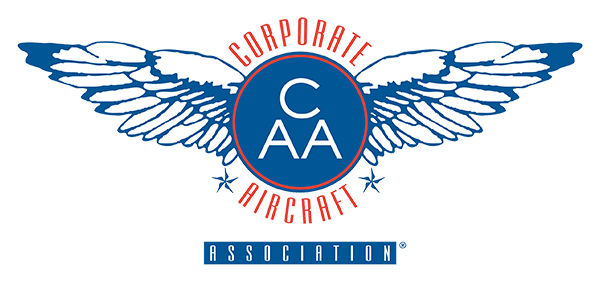Results 1 to 9 of 9
-
Username ProtectedMember
- Posts
- 68 Posts
- Thanked 40 times
- Praetor/Legacy Owner & Pilot
- Join Date
- Joined Oct 2020
03-13-2023, 08:43 AM #1
#1
Fuel lbs, gallons, temp
I have some questions on fuel that I haven't been able to answer via google, manuels, or logic. If anyone even wants to speculate on the answers, I would love to hear it!
My plane has active perf. So, it predicts fuel on destination and reads FOB (fuel on board).
I understand the fuel reading on the MFD in lbs lists the quantity of fuel based on the capacitive sensors. The sensors measure volume. There are no sensors on the plane that measure the weight of the fuel.
As we all know if it is very hot out (e.g. 35 degrees C) you can end up with as little as 5025 lbs of fuel when FULL. At colder temperatures I've filled to as much as 5250.
As far as I know the volume of the fuel tanks doesn't change with temperature. So, there must be some temperature factor that explains the variation in the amount of fuel that can be taken on board. And, since the fuel isn't weighed, this must be a factor applied in software.
I also understand that FOB (fuel on board) is calculated by measuring the amount of fuel that leaves the tank using the fuel totalizer. I've been watching the difference between these to and I've noticed that FOB on a long flight is typically 200 lbs lower than the fuel number presented on the MFD as measured by the capacitive sensors. (In straight and level flight.)
Question 1: Is the MFD fuel quantity corrected for temperature? If so, what temperature is used to correct converting volume to lbs? Also, how often is this value read and applied to the display? E.g. does the fuel panel use a fuel temp probe to get the temperature while filling and applies a density correction? After the plane is filled is the temperature of the fuel assumed not to change?
I'm having trouble looking up good data that show how fuel density varies in the -20 to +35 degrees C range. If anyone has a link, please provide.
Question 2: Does anyone know why the FOB number deviates significantly from the MFD fuel qty over the duration of the flight? Has anyone seen the FOB number greater than the MFD number?
Question 3: Should the MFD Fuel number be considered correct in regard that the energy on board (e.g. less dense fuel = less energy) varies between the energy of 5050 lbs of fuel and 5250 lbs of fuel?
Question 4: Code 7700 says that jet fuel density varies based on the region it is purchased. Highest in california, lowest in asia. Does anyone know if this is true? It seems that Jet A-1 is the international standard and it specifies both a specific weight and energy density for the fuel. Does anyone have any data as to how the density of fuel varies by region (or supplier) and if that correlates to energy density? Is higher density fuel always more energy dense?
Question 5: Does the FADEC control the engine N1 based on a target throttle setting and then adjust the fuel flow to meet that N1 number? Or, does the FADEC meter out a fixed amount of fuel based on the throttle setting? Said another way, will fuel with a lower energy density flow faster into the engine at max cruise than higher energy density fuel?
Question 6: I've been flying in Dubai, India, and Indonesia. A part of the world where you have to check that you are getting what you paid for. I've noticed that the gallons of fuel delivered to my plane is consistently less than my fuel receipt amount. See image. Can anyone explain this?
-
Username ProtectedReally Frequent Poster
- Posts
- 161 Posts
- Thanked 77 times
- Phenom 300 Owner & Pilot
- Join Date
- Joined Oct 2020
03-13-2023, 09:39 AM #2I'll address what probably will help you answer all of your questions. FOB is sync'd at the beginning of the flight and is a measurement at that point in time of what's on board. The system (FOB or FOD) is not looking for live readings anymore since you sync'd at the beginning your fuel load. I assume its just then looking at fuel used and subtracting from that and whatever other performance calculation for the rest of your flight it does.
That is why you may get an hour into the flight and notice the fuel readings are different than what you originally sync'd because of temp or other items -
Username ProtectedReally Frequent Poster
- Posts
- 161 Posts
- Thanked 77 times
- Phenom 300 Owner & Pilot
- Join Date
- Joined Oct 2020
03-15-2023, 10:42 AM #4I also tried to look through Garmin's documentation and it is especially vague on the calculation. I did find in another G1000 manual the following:
FUEL CALCULATIONSNOTE: Fuel calculations do not use the aircraft fuel quantity indicatorsand are calculated from the last time the fuel was reset.Fuel used (GAL Used) and range (in nautical miles) are calculated basedon the displayed fuel remaining (GAL REM) and the fuel flow totalizer. Thecalculated range also takes into account the aircraft’s heading and the winddirection and speed.
Naturally that is talking about gallons, but everything I have understood about the system is consistent with this. On your next flight, try not sync'ing the FOB at first and go see what it tells you for FOD once you are at cruise. I believe you will find it uses the last reported fuel sync and even though your planning gave you enough fuel and you can see the indicators, the FOD will likely show you don't have enough. -
Username ProtectedMember
- Posts
- 73 Posts
- Thanked 25 times
- Phenom Instructor/Mentor
- Join Date
- Joined Oct 2020
03-15-2023, 12:26 PM #5(Username Protected) - partial answers (as best I can) embedded within your post -
take care,
(Username Protected)
https://www.(Username Protected)aviation.com -
Username ProtectedMember
- Posts
- 68 Posts
- Thanked 40 times
- Praetor/Legacy Owner & Pilot
- Join Date
- Joined Oct 2020
03-25-2023, 05:30 PM #6
#6
Hey all. I got a response from contact center that clarifies quite a bit:
1. Can you tell me how the fuel quantity displayed on the MFD in green is calculated? E.g. does the fuel panel measure the capacitance of the fuel and then apply a temperature correction (with an assumed density) to display the quantity of fuel on board? If so, is there any documentation of the temperature calculation? Also, if there is a temperature calculation, does this also get applied during flight? Or, during flight is the totalizer used to compute the remaining fuel?
Regarding your first question, there are 8 fuel quantity probes in the electrical fuel quantity indicating sub-subsystem. The probes provide capacitance values to the Electronic Fuel Conditioning Unit (EFCU) for fuel quantity indication. The tank contents are computed using a measurement algorithm based on the tank geometry and the immersed height of each probe. Each probe reading is compensated by correcting, for fuel temperature, the values of permittivity and density.
Please, refer to AMM SDS - 28-41-00 - ELECTRICAL FUEL-QUANTITY INDICATING for more information.
2. Can you tell me how the FOB is calculated for active perf. I see that over the course of a flight the FOB is lower than the green MFD fuel amount by about 200 lbs. Is the FOB calculated based on active perf, or is it calculated using a fuel totalizer that measures flow?
The Fuel On Board (FOB) should be initialized (FOB SYNC) on ground (ramp). The Weight and Balance computes FOB based on initialized FOB and fuel flow over time, it is not recommended to synchronize FOB after the airplane is airborne, which would avoid the function to provide FOB computations independent from the fuel quantity sensors.
Please, refer to POH 4-40, page 4 for more details
POH 4-40 is the following, which has been discussed.
here is the snippet from the POH
Does anyone have access to the AMM document that is referenced?
(Username Protected) - regarding the fuel numbers. This got me also. The fuel filled on the plane is the fuel from the start of the current flight minus the end of the PREVIOUS flight. Yes, that does mean you can't repeat my calculation for the first flight. End fuel for the previous flight is not available. -
Username ProtectedMember
- Posts
- 68 Posts
- Thanked 40 times
- Praetor/Legacy Owner & Pilot
- Join Date
- Joined Oct 2020
03-26-2023, 08:45 PM #8
#8
AMM SDS-28-41-00 is an overview of the capacitive fuel measurement system. Some important points:
- Accuracy of fuel measurement is +/- 1.0% of the maximum capacity plus +/- 2.0% of the reading at normal attitudes.
- Normal attitudes on the ground -2.2 to + 0.5 degrees pitch and +/- 1.0 degree roll.
- Normal attitudes in the air are +1.0 to +3.0 degrees pitch and +/- 1.0 degree roll.
- There is no explanation of temperature correction for weight.
I found a chart for fuel density table for Jet A.
Using this I found the equation for density
density (lbs/gal) = -6.38E-03 * Temp + 6.94
I expect to get 5150 lbs of fuel at 20 degrees C. Using that as a reference I get the following table for lbs of fuel vs. temperature.
This correlates well with the number of lbs of fuel I expect to get when the tank is full. This tells me we would need to chill the fuel truck below -20oC to get the mythical 5350 lbs of fuel the plane is rated to.
So, at 40oC one would expect 4% lower fuel density than at -5oC.
From Embraer, we know that FOB is calculated based on totalizer flow.
If FOB is not equal to the fuel measurement the question is why? Is this an error in the totalizer? Perhaps the totalizer is not correcting for temperature and just using a fixed density such as 6.75 lbs/gal?
I understand that density of Jet A directly relates to energy. From this table density at a given temperature seems to vary ~8% depending on the supply.
So, I would conclude that there is an 8% difference in energy loaded on the plane based on the fuel supplier. There is a 4% additional difference based on temperature.
If you have a bad day - headwinds significantly worse than forecast, fuel the plane on a hot day, and get a low density of fuel you could face a 20% fuel deficit from your plan.
I still can't explain why the volume of fuel delivered by the fuel truck is consistently > 6% more than measured on the fuel gauge. -
Username ProtectedMember
- Posts
- 68 Posts
- Thanked 40 times
- Praetor/Legacy Owner & Pilot
- Join Date
- Joined Oct 2020
04-03-2023, 08:04 AM #9
#9
Some more information that is useful.
Thanks to (Username Protected) for sending me a challenger presentation that states, "Jet A or A1 fuel density is controlled to 6.75 lbs/gallon in the USA. International specs for Jet A or A1 fuel are 6.46 - 7.00 lbs/gallon."
From Chevron's website, "Generally, less dense jet fuels have a higher gravimetric energy content, and more dense jet fuels have a higher volumetric energy content."
By my calcs that says you can get +/- 4.3% range out of the fuel depending on where you take on the fuel outside of the USA.
On a 4000 lb trip that's +/- 172 lbs depending on fuel density (excluding temperature factors).
Interesting that Bharat Petroleum, a major supplier in India, quotes 775 to 840 (kg/m^3) range for density. That corresponds to the 6.46 to 7.00 lbs/gallon.
Jet A-1 fuel in the United Arab Emirates adheres to ASTM D-1655 to that guarantees 6.75 lbs/gallon.
So, looks like a good rule of thumb is that there is a 12% range difference between (a) 7.00 lbs/gal fuel (outside the USA) at -20 degrees C vs. (b) 6.46 lbs/gal fuel at 40 degrees C.
-(Username Protected)
- Quick Links
- New Posts
- Participated
- Subscribed
- Today's Posts
- Hot This Week


 Reply
Reply























